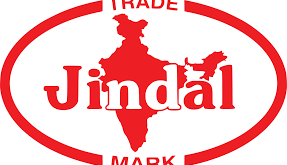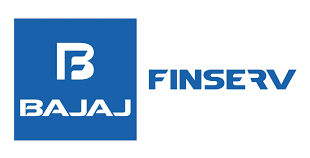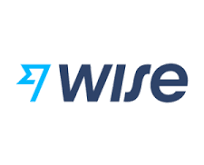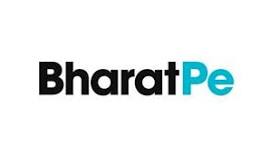Traveltech 2.0 – The Next Phase of Digitally Empowering the Indian Traveler Report
Bengaluru, February 28, 2024: The bus industry in India is projected to achieve a value of Rs. 104,000 crores in 2026, with a compound annual growth rate (CAGR) of 6.64 per cent. The CAGR for State Transport Undertakings (STUs) is 6.36 per cent and it is 7.37 per cent for private buses. “Traveltech 2.0: The Next Phase of Digitally Empowering the Indian Traveler”, a report jointly produced by the Internet and Mobile Association of India (IAMAI) and Grant Thornton Bharat reveals these numbers. The report was launched at the India Digital Summit (IDS) 2024 in Mumbai today.
The surface transportation services like bus and rail travel has huge potential for OTA service providers who offer value added services to their customers in addition to basic online ticketing.
Karnataka, Maharashtra, Tamil Nadu, Andhra Pradesh, Telangana, and Uttar Pradesh emerge as the principal markets in STUs, constituting nearly 70% of the market share. The top five states in total addressable market (TAM) for private buses are Uttar Pradesh, Maharashtra, Rajasthan, Punjab, and Haryana, which are expected to account for around 45% share by 2026.
A graph of numbers and a number
Description automatically generated with medium confidence
Online ticketing among bus travelers is on the rise, even though the price sensitive category of non-AC buses or intra-city bus ticketing is still predominantly offline based. Intra-city bus travel is still predominantly served by State Transport Units (STUs) which offers great scope for private sector involvement.
Intra-city bus services are witnessing a plethora of value-added services like live bus tracking and digital ticketing being offered in city buses. A primary survey conducted among bus travellers across eight cities revealed significant interest and uptake for online ticketing and value-added services.
A screenshot of a computer
Description automatically generated
Even though many users still are not using online ticketing simply as a continuation of old habits, there is a great interest for online services provided they offer certain features like details on seat availability and reservation, low costs, discounts and multiple options at specific price ranges.
As regards Indian railways, the revenue contribution of reserved passengers stands at 70%, which corresponds to only 12% passengers carried in terms of volume, whereas 88% unreserved passengers contributed to only 30% of the revenue to the Indian railways.
A graph of a bar chart
Description automatically generated with medium confidence
Online ticketing is Indian railways is still restricted for most private players, driven primarily by the online ticketing services run by Indian Railways itself. Nonetheless, the report estimates that reserved ticketing presents significant for OTAs/Agents in coming years.
A screenshot of a graph
Description automatically generated
With unreserved passengers constituting a substantial portion of the total passenger count, collaboration between CRIS and private OTAs emerges as a transformative opportunity. The shift to digital ticketing not only reduces operational burdens for the Indian Railways but also offers private OTAs an avenue to innovate tariff structures and enhance user convenience. This synergy holds the potential to elevate the passenger experience, alleviate infrastructure strain, and foster a symbiotic relationship, yielding efficiency gains for the railway system and expanded market opportunities for the private sector.
“Technology is revolutionising travel, making it easier to use than ever before. Chalo is thrilled to support the publication of the Travel Tech report. I’m confident that it will spark meaningful conversations and shape positive policies that will ensure that we leverage technology in the best possible way to make city bus travel better,” said Dhruv Chopra Co-founder and CMO, Chalo, speaking at the launching of the report at the India Digital Summit 2024 on February 28.
Commenting on the launch of the report Aloke Bajpai, Chairman, Managing Director and Group CEO, ixigo said “Railways and buses are revolutionizing the ground transport segment in India. With infrastructure development, increased internet penetration, modernization and improvement in service quality with OTA-driven tech upgrades, this segment is poised for further growth. By leveraging technology, OTAs are empowering travelers to make smarter travel decisions, and are playing a leading role in driving online adoption in the ground travel sector.”
“The next evolution of travel tech will happen as we unlock the full potential of OTAs in the ground transport business. That’s the key message from the IAMAI Travel Tech report. It is important to remove tax disparities between e-commerce operators and e-commerce suppliers in the domestic market. Currently, a customer pays a 5% GST charge when booking a non-AC bus through an e-commerce platform. This charge is zero for a direct booking from a bus operator, irrespective of whether it is done in online or offline mode,” said, Prakash Sangam, CEO, Redbus
Addressing the same session Vikash Jalan, Chief Business Officer, PayTM Travel, commented, “The new IAMAI Travel Tech Report explores the role of technology in shaping India’s travel landscape, highlighting the impact of OTAs on ground transportation and calling for collaboration to bridge the digital divide and unlock the full potential of travel technology.”
 Newspatrolling.com News cum Content Syndication Portal Online
Newspatrolling.com News cum Content Syndication Portal Online







